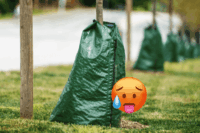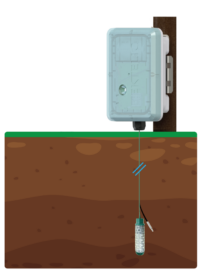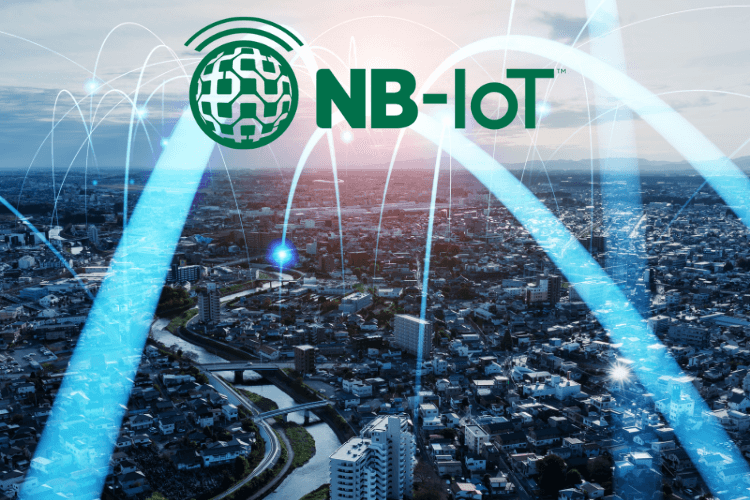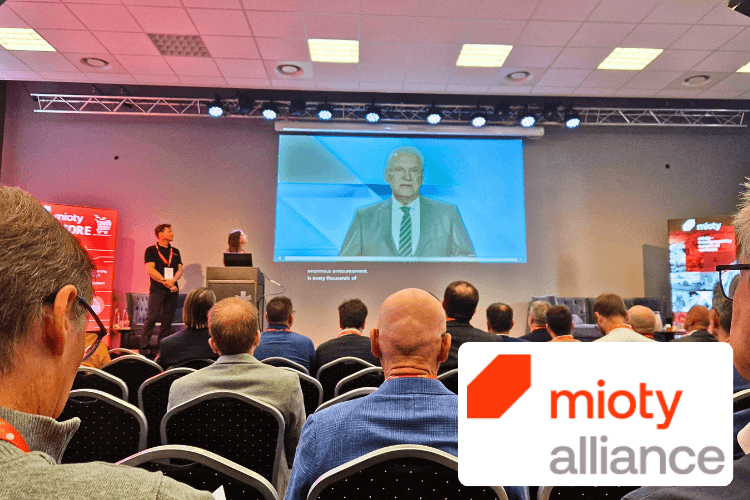Urban trees under climate stress - what municipalities can do

The elixir of life: 200 liters of water per month
Trees, especially urban trees, need a total of around 200 liters of water every month for the first three to five years after planting, from April to August. Even after that, they should be watered additionally in very hot months and when there is little rainfall to ensure good and healthy growth until they are ten years old.
Climatic changes threaten tree population
Climate change and urban urbanization with many sealed surfaces have contributed to trees in cities suffering under extreme conditions. Increasing drought has also led to considerable challenges in many cities around the world in recent years. This problem is not only a question of aesthetic cityscape, but also has an impact on the urban ecosystem and the quality of life of people and animals in these areas.
The ecological value of urban trees
Urban trees are not just decorative elements. They fulfill numerous important functions in the ecosystem that support both human and animal life. Trees help to improve air quality by absorbing carbon dioxide (CO2) from the air and releasing oxygen. They also provide ideal shade and cool the air in urban areas, which is particularly important during heat waves. They also act as natural noise barriers and provide a habitat for numerous animal species, from birds to insects.
Trees also contribute to mental health by creating green oases that serve as a retreat from hectic city life. This is because studies have shown that spending time in green spaces reduces stress and increases general well-being. Given these multiple benefits, it is crucial to protect the health and survival of urban trees.
Smart irrigation with LoRaWAN - what municipalities can do
One promising solution for the sustainable and efficient irrigation of trees and plants is the use of wireless radio sensors based on LoRaWAN radio technology. LoRaWAN (Long Range Wide Area Network) is a radio technology that is characterized by its long range and low energy consumption. More and more cities and municipalities have such a network, as it can be used to map numerous different application scenarios in the smart city context.
KIWI Sensor Kit #2
The Sensor Kit #2 from Tektelic consists of a KIWI LoRaWAN soil and environmental sensor including a tensiometer for measuring soil moisture and a temperature sensor.
KIWI Sensor Kit #3
The Sensor Kit #3 from Tektelic consists of a KIWI LoRaWAN soil and environmental sensor including two tensiometers for measuring soil moisture and two temperature sensors. This allows the soil moisture and temperature to be recorded in two soil layers of different depths.

When it comes to a smart irrigation system for trees and plants, the wireless sensors can simply be inserted into the soil around the trees and thus continuously measure the soil moisture - even at different soil depths. The KIWI LoRaWAN soil moisture and environmental sensors from Tektelic, for example, are suitable for this purpose. The collected data is then forwarded to an IoT platform. If the soil moisture falls below a certain value, a message is sent from the platform to the responsible road or green space authority. This ensures that trees are only watered when it is really necessary.
Some cities are already leading the way, including Pforzheim, Hamburg and Frankfurt(pilot project by Mainova AG), to name but a few.
The advantages are obvious:
- Watering trees as needed saves water and is becoming increasingly important in times of water scarcity.
- Tree death in cities is counteracted, which contributes to the promotion of a liveable and sustainable city.
- The targeted approach to the trees saves on personnel and fuel costs as well as pollutant emissions by avoiding too many unnecessary watering trips.
Conclusion
The increasing drought poses a significant challenge for the preservation of urban trees. Given the numerous environmental and social benefits that trees provide, it is crucial to implement innovative solutions such as the use of LoRaWAN. This technology enables efficient and resource-saving irrigation, which not only ensures the survival of trees, but also contributes to the sustainable development of our cities. By protecting the health of our urban trees, we are investing in a more liveable and environmentally friendly future for all city dwellers.
Would you like to know what other applications are possible with LoRaWAN in the Smart City?
Then take a look at our other pages. There you will find even more information about Smart City and, of course, about our services.
Or do you still have questions about LPWAN technologies? We will be happy to advise you.




